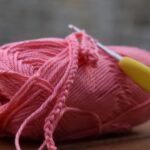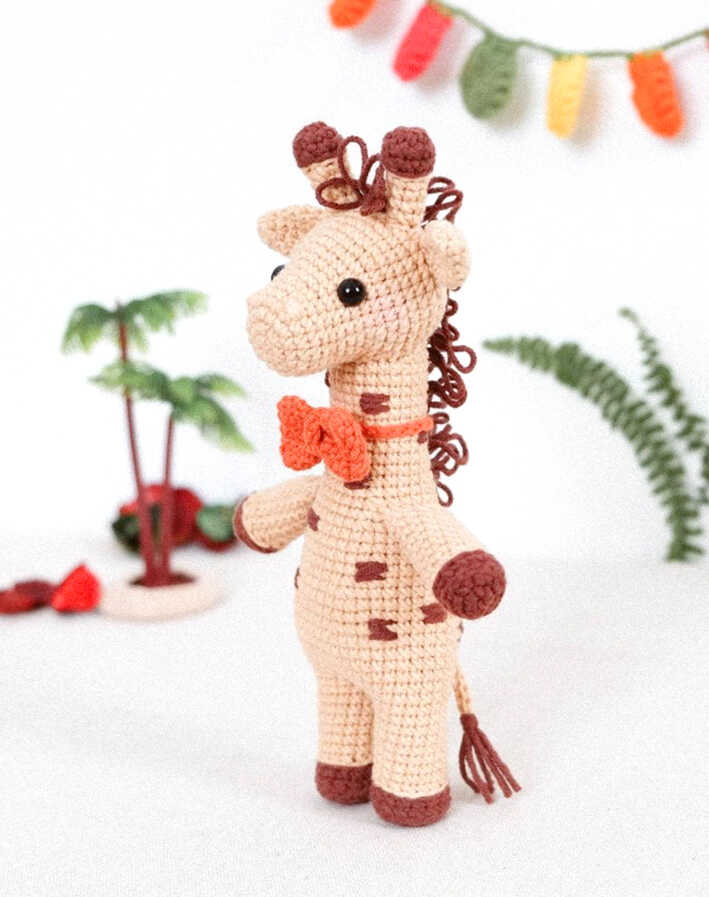Welcome to our comprehensive guide on mastering the single crochet stitch! Whether you are new to crocheting or looking to polish your skills, this tutorial is designed to help you understand and execute the single crochet stitch perfectly.
The single crochet stitch is one of the most fundamental crochet stitches. When you manage the slip knot crochet and the foundation chain stitch, you’ll create it by inserting the hook into a stitch, yarning over, pulling through to have two loops on the hook, and then yarning over again and pulling through both loops. Watch an easy video tutorial we prepared for you below.
Learning the single crochet stitch is essential because it forms the basis for more complex stitches and techniques in crocheting. Mastery of this stitch can lead to the creation of a variety of projects, including blankets, hats, and scarves.
Single Crochet Stitch Tutorial
This tutorial will cover everything from selecting the right materials to detailed steps on how to make a foundation single crochet, along with expert tips and tricks to enhance your crocheting experience.
Materials Needed
Step-by-Step Written Instructions on How to Crochet a Single Crochet
- Create a slip knot by making a loop and pulling a strand through, placing it on your hook.
- Make a foundation chain by putting yarn over and pulling through the loop on your hook repeatedly.
- Insert the hook into the second chain from your hook.
- Yarn over again and pull through, leaving two loops on the hook.
- Yarn over again and pull through both loops on the hook.
Step-by-Step Video Tutorial on How to Single Crochet
Here is a simple video tutorial from YourCrochet on how to do a single crochet foundation chain.
Tips and Tricks for Mastering Single Crochet
We prepared some useful tips and tricks for mastering this basic crochet stitch, so you can start your journey easily. Check them out!
How to Maintain Tension
Maintaining even tension is crucial for creating uniform stitches and professional-looking projects. Hold the yarn so that it glides smoothly through your fingers without slipping or snagging. Adjust the tension by tightening or loosening your grip on the yarn. Practicing with different yarn weights and hook sizes can also help you find the best tension control method.
How to Troubleshoot Common Mistakes
Uneven Edges
If you notice your edges are wavy or uneven, check if you’re adding or skipping stitches at the row ends. Make sure to count your stitches after each row to ensure consistency.
Inconsistent Stitches
Stitches that vary in size often result from inconsistent yarn tension. Focus on yarning over and pulling through with the same force each time.
Accidental Increases or Decreases
These occur when stitches are accidentally skipped or added. Place a stitch marker in the first and last stitches of each row to provide a visual guide to where you should start and end.
How to Change Colors in Single Crochet
To achieve neat and seamless color changes in single crochet, complete all but the last pull-through of the stitch before the color change with the old color. Then, yarn over with the new color and complete the stitch. Cut the old yarn, leaving a tail to weave in later, and continue with the new color. This method ensures that the new color starts cleanly at the beginning of the next stitch.
How to Increase and Decrease in Single Crochet
Increasing
To increase single crochet, simply work two single crochet stitches into the same stitch. This technique is useful for shaping pieces like hats and amigurumi.
Decreasing
To decrease single crochet, use the single crochet 2 together (sc2tog) technique. Insert the hook into the next stitch, yarn over, and pull up a loop, then insert the hook into the following stitch, yarn over, and pull up another loop. You’ll have three loops on your hook. Yarn over and pull through all three loops. This method creates a stitch that slants slightly and helps shape your fabric.
How to Create Different Textures with Single Crochet
Front Loop Only (FLO)
Crocheting into only the front loop of each stitch creates a ridge on the fabric’s surface, giving a textured appearance ideal for ribbing.
Back Loop Only (BLO)
Similar to FLO, but by crocheting into the back loop, you create a subtle horizontal stripe effect, which is excellent for stretchy fabrics like sweater cuffs.
Mixing Stitches
Combine single crochets with taller stitches, like double crochets in alternating patterns, to create unique textures and patterns within your fabric.
These detailed tips and tricks should help enhance your single crochet techniques, leading to more satisfying results and enabling you to tackle a wider variety of crochet projects with confidence.
FAQ
What is the difference between single crochet and double crochet?
Single crochet and double crochet are both basic crochet stitches but differ in height and texture. Single crochet is made by inserting the hook into a stitch, yarning over, pulling through to have two loops on the hook, then yarning over again and pulling through both loops. Double crochet involves yarning over before inserting the hook, pulling through to have three loops on the hook, yarning over, pulling through two loops, then yarning over again and pulling through the remaining two loops. Double crochet creates a taller and looser fabric compared to the tighter weave of single crochet.
How do I make a slip knot for single crochet?
To make a slip knot for single crochet:
- Lay the yarn over your hand with the tail hanging down.
- Wrap the yarn around your fingers, making a loop.
- Pull a loop of yarn through this first loop.
- Tighten the knot by pulling the tail while holding the loop.
But it’s better to watch a short video tutorial we placed in How to Make a Slip Knot — Crochet Guide for Beginners.
What size hook should I use for single crochet?
The size of the hook depends on the yarn weight. Generally, the yarn label suggests an appropriate hook size. For common worsted-weight yarn, you will typically use a hook size of 5.5 mm to 6.5 mm (US I-9 to K-10.5). Adjust the hook size based on the desired fabric density and your personal tension.
Check out the hook size comparison chart to make the right choice:
| Metric Size (mm) | US Size | UK Size |
| 2.0 mm | B-1 | 14 |
| 2.25 mm | B-1 | 13 |
| 2.5 mm | C-2 | – |
| 2.75 mm | C-2 | 12 |
| 3.0 mm | – | 11 |
| 3.25 mm | D-3 | 10 |
| 3.5 mm | E-4 | 9 |
| 3.75 mm | F-5 | – |
| 4.0 mm | G-6 | 8 |
| 4.5 mm | 7 | 7 |
| 5.0 mm | H-8 | 6 |
| 5.5 mm | I-9 | 5 |
| 6.0 mm | J-10 | 4 |
| 6.5 mm | K-10.5 | 3 |
| 7.0 mm | – | 2 |
| 7.5 mm | – | 1 |
| 8.0 mm | L-11 | 0 |
| 9.0 mm | M/N-13 | 00 |
| 10.0 mm | N/P-15 | 000 |
| 12.0 mm | O | – |
| 15.0 mm | P | – |
| 20.0 mm | Q | – |
Can I use single crochet to make a blanket?
Yes, this stitch fits perfectly for making a blanket. It creates a dense and warm fabric, making it ideal for cozy blankets. To add interest, you can use various colors, create stripe patterns, or incorporate different stitches along with a single crochet to enhance the texture.
How do I increase and decrease in single crochet?
For a single crochet increase, insert two single crochet stitches into the same stitch. This is often used to shape the fabric.
For single crochet decrease, use the single crochet two together (sc2tog) technique: insert the hook into a stitch, yarn over, pull up a loop, then insert the hook into the next stitch, yarn over, pull up another loop, then yarn over and pull through all three loops on the hook.
Can I use single crochet stitch to make amigurumi?
Absolutely! Single crochet is the most common stitch used in amigurumi because it creates a tight fabric that holds stuffing well and gives a neat, smooth finish to the dolls or animals.
What is the best type of yarn for single crochet?
The best type of yarn for a single crochet depends on the project. You will often use a soft, medium-weight yarn for garments and blankets. A stiffer cotton yarn or acrylic yarn is preferable for amigurumi and other projects requiring stiffness and durability.
How do I make a single crochet border?
Follow the instructions below to learn how to do a single crochet border:
- Start at any corner of the project.
- Insert the hook into the edge stitch, yarn over, and pull up a loop.
- Yarn over and pull through both loops on the hook.
- Repeat around the project, placing one to three single crochets in each corner stitch to maintain a flat edge.
Reverse single crochet border
Another simple yet effective way to create a firm, corded edge on crochet projects is to make a reverse single crochet, also known as the crab stitch. It’s often used as a finishing border because of its neat and attractive appearance. Here’s how to make a reverse single crochet:
- Finish the main portion of your crochet project. The reverse single crochet typically works as the final round or row.
- Do not turn your work! Unlike most crochet stitches, where you turn your work to start a new row, you do not turn your work when starting the reverse single crochet. You’ll be working from left to right instead of the usual right to left.
- Insert your crochet hook into the next stitch to the right (the last stitch of the previous row, from your perspective).
- Wrap the yarn over your hook from back to front.
- Pull the yarn through the stitch. You will now have two loops on your hook.
- Yarn over the hook once more.
- Pull the yarn through both loops on your hook. You’ve completed your first reverse single crochet stitch.
- Continue to work in this manner, inserting the hook into each next stitch to the right, making sure to keep the tension even throughout.
Because this stitch tends to tighten, it’s helpful to keep a looser tension than normal. This makes it easier to insert the hook into each stitch.
This stitch creates a textured, twisted edge that can beautifully define the borders of scarves, blankets, or any crocheted fabric edges, giving your project a polished, professional look.
Can I make a hat using single crochet?
Yes, you can make a hat using a single crochet stitch. It’s suitable for creating warm, durable hats. Work in rounds to shape the crochet hat, increasing as necessary to fit the head comfortably.
How do I join yarn in single crochet?
To join yarn in a single crochet, simply start the stitch with the old yarn and finish it with the new yarn. This will seamlessly integrate the new yarn into your project.
Can I use single crochet to make a scarf?
Single crochet is excellent for scarves because it creates a thick, warm fabric. Using various yarn colors or adding patterns can enhance the visual appeal of the crochet scarf.
How do I make a magic ring for single crochet?
Follow this written instructions to learn how to make a magic ring:
- Loop the yarn around your fingers to create a circle.
- Insert the hook into the circle, yarn over, and pull up a loop.
- Yarn over and pull through to make the first stitch.
- Continue single crocheting into the circle. Pull the tail to close the circle tightly.
Can I use single crochet for colorwork?
Yes, single crochet works well for colorwork, especially in techniques like tapestry crochet or pixel crochet, where yarns of different colors are used to create patterns and images within the fabric.
How do I make a single crochet bobble stitch?
To make a single crochet bobble stitch, which adds texture and visual interest to your crochet projects, follow these steps:
Identify where to place the bobble
Work your way to the point in your pattern where you want to make the bobble stitch.
Yarn over
Start by yarning over (wrapping the yarn from back to front over the crochet hook) as you would for a double crochet stitch.
Insert the hook
Insert your crochet hook into the stitch where you want the bobble to appear.
Pull through
Yarn over again and pull through, leaving three loops on your hook.
Complete the partial double crochet
Yarn over and pull through the first two loops on your hook. Instead of completing the double crochet, you’ll leave the remaining two loops on the hook.
Repeat the process
Yarn over, insert the hook back into the same stitch, yarn over again, and pull through. You’ll have four loops on your hook. Yarn over and pull through the first two loops, leaving three loops on the hook.
Finish the bobble
Repeat step 6 until you have the desired number of loops on your hook. A bobble typically has five partial double crochets, leaving six loops on the hook.
Close the bobble
Yarn over and pull through all the loops on the hook in one go. This completes the bobble stitch. To securely anchor the bobble, crochet one single crochet in the next stitch to push the bobble to the front of the work, making it pop out more.
The single crochet bobble stitch is a great way to add a pop of texture to various projects like hats, scarves, or even decorative home items. It creates a pronounced puff that stands out against simpler crochet stitches surrounding it, giving your project a unique touch.



